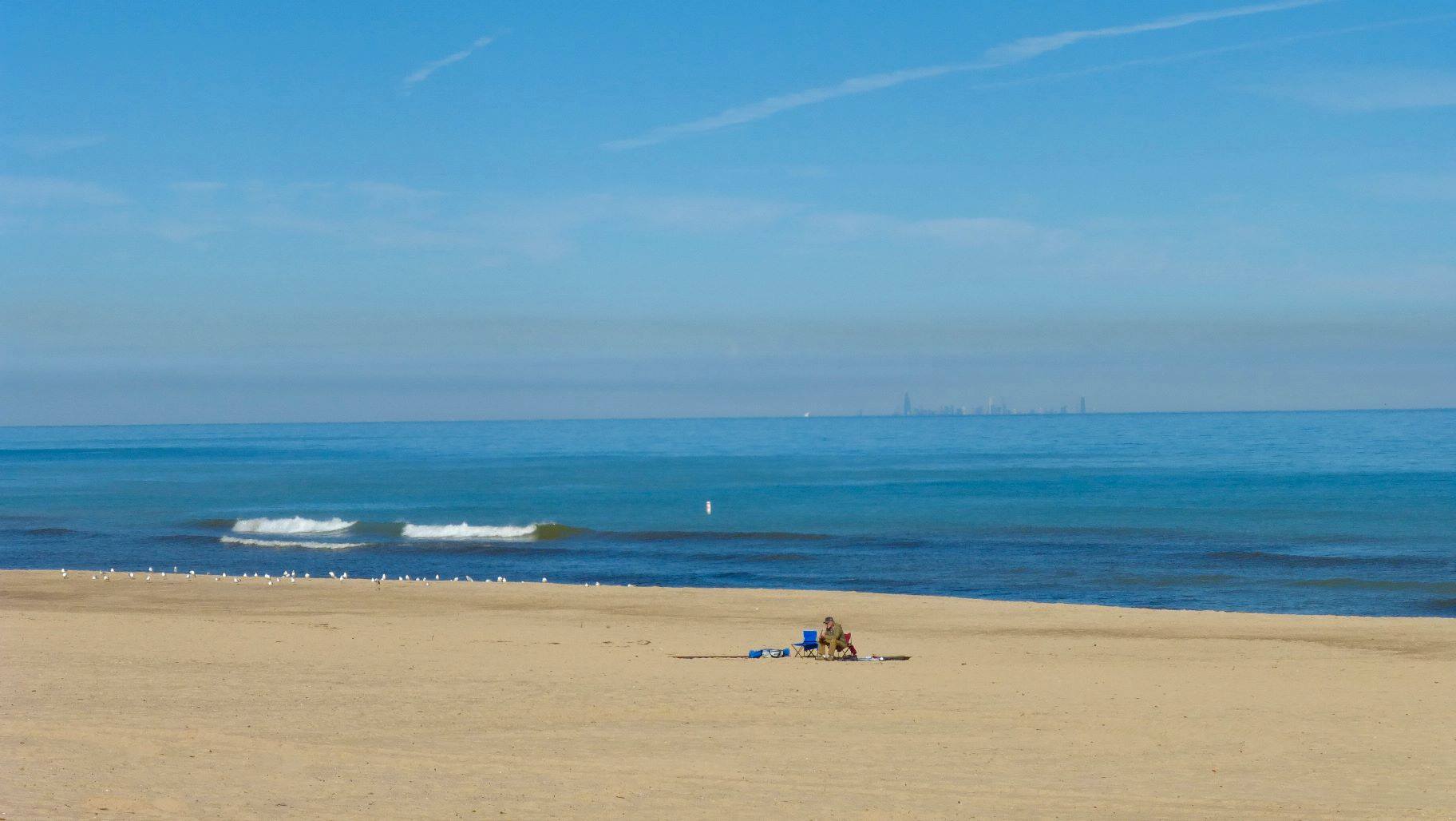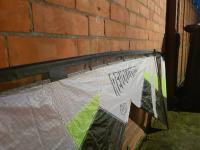-
Posts
3,005 -
Joined
-
Last visited
-
Days Won
60
Content Type
Profiles
Forums
Gallery
Downloads
KL Shop
Blogs
Articles
Everything posted by makatakam
-
When the saltwater evaporates it leaves a salt residue on ALL the surfaces it touched, inside and out. So, if the only way you can rinse is to shower with it, do it. It will add a lot of time to the life of the kite. The salt residue is very similar to a fine abrasive that becomes lodged in the weave of the sail material, and attacks the fabric from the inside each time the fabric moves. The sail fabric fibers are in constant motion while the kite is flying and the salt "crystals/powder" cut the individual strands wherever they are in contact. Each time you dip the kite in saltwater you add to the problem. After three or four times without rinsing the kite you can actually feel the grittiness. The salt residue has the same effect that sand does only it acts on a microscopic scale from the inside. It can do more damage than sand because sand only abrades the surface strands, whereas the salt residue affects every fiber in every strand. It can reduce the life span of the kite by 30%-ish. A car wash/pressure wash is an option. Just keep the nozzle far away from the material. You want to rinse it, not blow holes in it. Another option is to dip it in a pond or fountain -- anything that's not saltwater.
- 212 replies
-
- 1
-

-
- tips
- san francisco
- (and 4 more)
-
This link is very informative, if you want to learn a lot about bridles: http://wardley.org/index.html It is not Silver Fox specific, but if you want to learn about bridle design in general and the differences among them, it's worth checking out. I'm sure someone will chime in with the exact settings for the Fox, but in the meantime.......click on kites, click on bridles and be prepared to spend some time reading. Lots of info. It helped me to understand the trihedral cross-active bridle on the Gemini II I had won in one of the Karma drawings. Made a very complicated bridle setup easier to understand. It took some time and a few tries, but eventually I began to understand the theory behind it. Once you know what the intent is, a bit of simple logic makes adjustment fairly easy.
-
Am I the only one who thinks there's something strange about this photo? If it is intentional, then I salute you.
-
.....and then you discover quad-line kites. Ouch!
-
Hi, Justin, and welcome to the forum. Fly often. Each time out you get a bit better. Looks like you've got it under control already.
-
.thumb.jpg.53aabc63a639af8d375b2c92cf2e13f8.jpg)
Need advise-buying new rev (classic or b series?)
makatakam replied to zerolady's topic in Quad Heads
The best way to learn is from other people directly. Get together with others as often as possible. There are very many "Rev" pilots in Europe, and you should have no problem finding someone to fly with. You may have to drive an hour or more, but the amount and speed at which you will learn to control the kite is worth every minute of the drive. Click on the map tab at the top of the page to see who is near you. -
Happy Birthday. I'm guessing that that person is aware of your addiction.
-
Don't forget to rinse with fresh water after a dip in the ocean. The salt water speeds up the deterioration of the kite's components.
- 212 replies
-
- 1
-

-
- tips
- san francisco
- (and 4 more)
-
These are not rocks. They are stone hearts. These you love.
-
No need to blush. Keep kicking the little rocks, though. They deserve it. Really, keep kicking them. They have broken a few of my windshields.
-
No need to blush. Keep kicking the little rocks, though. They deserve it.
-
@happysuperbutton You may be interested in these. The price makes experimentation a bit less "pain in the pocketbook". If you do get some, don't forget you'll need to make ferrules and/or buy already ferruled tubesets. The links take you to their home page which has lots of building stuff.
-
Ralph, Ralph, Ralph. Because why? Not enough prisoners in the Dungeon? Another poor kite to torture? Alas!!!! Congratulations. Spank it well.
-
Red, white and black? IKE colors. Definitely belongs in the Midwest! Can I get an amen? John, don't forget to use a green marker for the personalized autograph. (You know, Christmas and all.)
-
Three over average? There must be some way to keep everyone coming back for more! Must find it.
-
.thumb.jpg.53aabc63a639af8d375b2c92cf2e13f8.jpg)
Need advise-buying new rev (classic or b series?)
makatakam replied to zerolady's topic in Quad Heads
Ripstop nylon will absorb water and the kite will be very heavy, compared to when dry. Icarex repels water better. -
.thumb.jpg.53aabc63a639af8d375b2c92cf2e13f8.jpg)
Need advise-buying new rev (classic or b series?)
makatakam replied to zerolady's topic in Quad Heads
Yup, everything everybody said. Confusing, ain't it? Just get whatever you like most. If you really get into it, within two years you'll own half a dozen. To someone just starting out, the differences among the different kites are not that noticeable. Until you have close to 100 hours of flying time you probably will be able to tell the difference, but not enough to take advantage of it and make it work in your favor. -
Congratulations @Fragpie . The Zephyr is a very capable kite. If you are new to kiting you need to know that it is a kite that you can grow into as you learn. It's like buying a Ferrari and expecting to be able to drive like a Ferrari the first time you get in it. Ain't gonna happen. You must first learn how it handles in different situations. It is the same with the Zephyr. You will be able to fly it, of course, just don't expect it to make you a pro on day one. As you spend more time flying it you will appreciate its capabilities more and more. It will slightly frustrate you at times, but don't give up on it. In time you will love it. If you can already do Jacob's Ladders, then ignore everything I just said, except the word "congratulations".
-
Go here http://wardley.org/index.html click "kites", then start reading. Warning: Plan to spend at least a couple of hours -- there's a lot of info and you WILL get sidetracked.
-
Anything that is longer, wider, or both. Increased length and/or increased surface area will do the trick, except in very strong wind. In very strong wind, the best solution is to head for the nearest bar and have a beer.
- 212 replies
-
- 1
-

-
- tips
- san francisco
- (and 4 more)
-
Bob. Just call it Bob. ボブ
-
Also, because of framing and bridling differences among the various quad designs it may take a huge amount of adjustment to fly if you use Rev handles, especially for the designs that are near to or actually symmetrical from top to bottom. Sometimes the Rev handles and lines are just not compatible because of line length offsets and physical dimension and shape of the handles. In other words, it's just way too much adjustment as compared to just using the original handles. I'm not saying it can't be done -- just more time and hassle than using the ones that come with the kite.
-
Some quads are anything but "flat". Google Benson Airbow and Deca Synergy. Two very not-flat quads. Every quad has its own, sometimes radically different, flight characteristics. All will do some moves that the others can't. A Revolution kite is actually a 3D, non-flat sail when there is wind pressure on the sail. Get near one and take a good look at it when someone else is flying it. The advantage that the Revs have over the other types is the ability to revert from 3D towards flat when the wind pressure is reduced or eliminated, which makes side slides, axels and some other moves easier. Moves like axels are extremely difficult, if not impossible, using a 3D sail. Not saying that any one is better than another, just that they are all different. Obviously, the one you prefer will be the one with which you have the most fun. That's why when another person is flying something you haven't flown yet, you should ask to try it.
-
Or you could just say that each is different than the other and intended for a specific purpose and style of flying, and that each has its own skill set and abilities with only a bit of crossover. I find that when you give someone a non-detailed answer it will lead to more questions and possibly a new recruit to the sport.
-
I agree -- an outdoor EUL (extremely ultra light). And I like "Whisper" as a name for it!

